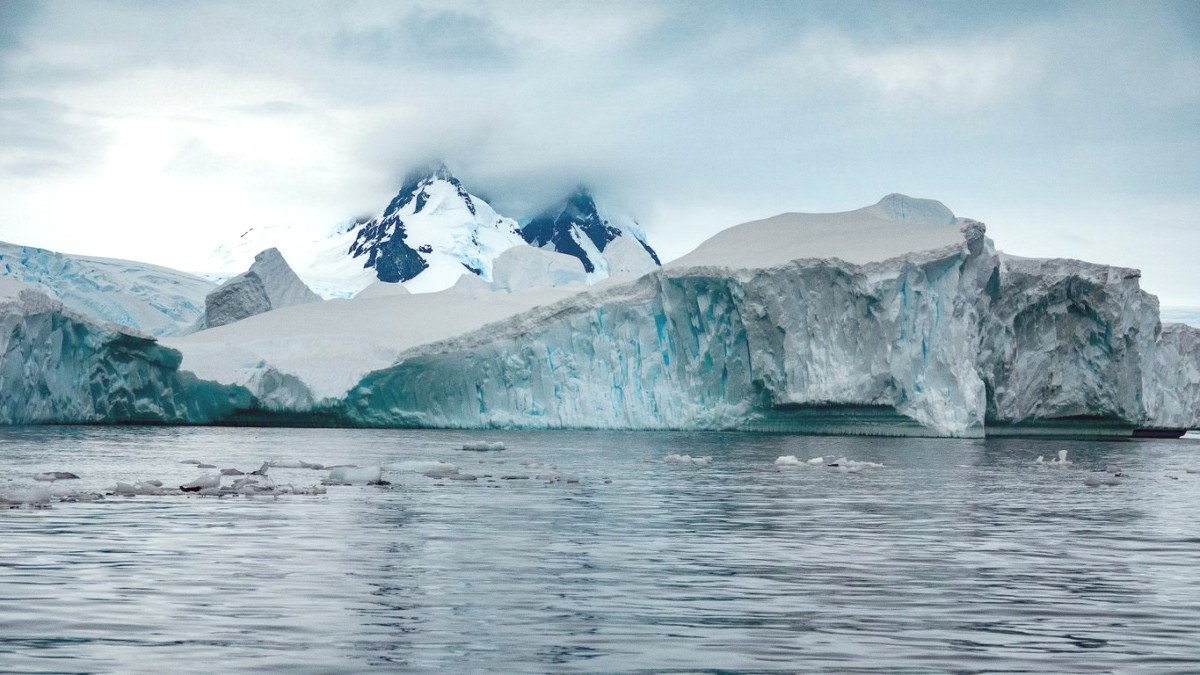
You step into a landscape shaped by ice and wind, home to creatures adapted to extremes. This journey offers an unique perspective on our planet's delicate balance. It connects you with a wild, serene environment.
The Antarctic Peninsula forms the northernmost extension of the Antarctic continent, reaching out over 1,300 kilometers, or about 800 miles, towards South America. Its distinct finger-like shape makes it the most accessible part of the continent for visitors.
This landmass features a spine of jagged, glaciated mountains, with some peaks rising more than 2,800 meters, or 9,200 feet, above sea level. Ice covers most of the peninsula, with only small coastal fringes becoming ice-free during the austral summer. These ice-free areas become the landing sites for visitors, revealing rocky shores and bustling wildlife colonies.
The Antarctic Peninsula is a place in history as the first part of the Antarctic continent sighted by humans. Many explorers made claims of discovery in the early 19th century. Edward Bransfield, Fabian Gottlieb von Bellingshausen, and Nathaniel Palmer each reported sightings in 1820. These early voyages marked the beginning of human interaction with this remote land.
Following these initial discoveries, the peninsula became a focal point for intensive whaling and sealing operations in the late 19th and early 20th centuries. Whalers hunted seals and whales to near extinction, leaving behind a legacy of abandoned stations and a stark reminder of humanity's past impact on this fragile environment. The remnants of these operations, like those on Deception Island, offer a somber yet critical glimpse into this period.
The peninsula hosted numerous research expeditions, attracting scientists from various nations eager to unlock the continent's secrets.
Some of the first permanent Antarctic research stations were established here, laying groundwork for international collaboration.
These stations continue valuable research, contributing to our understanding of climate change, oceanography, and polar ecosystems.
The region has faced overlapping claims by Argentina, Chile, and the United Kingdom, a complex geopolitical situation.
Claims are suspended under the 1959 treaty, which dedicates Antarctica to peace and scientific research, protecting its unique environment.
The Weddell Sea borders the peninsula to the east, known for its thick sea ice. To the west lies the Bellingshausen Sea. The Bransfield Strait separates the peninsula from the South Shetland Islands, a common first stop for cruises. The famous Drake Passage, known for powerful currents, sits between the peninsula and South America. This passage must be crossed by almost all visitors traveling by ship.
The geography here is a dynamic interplay of ice, ocean, and rock, constantly shifting with the seasons and currents. Towering ice cliffs, deep fjords, and scattered islands create a maze of stunning vistas.
The peninsula's northward extension makes its climate slightly milder than the continent's interior, permitting the relatively rich biodiversity along its coasts. Warm ocean currents influence the western side, while the eastern side remains colder.
The Antarctic Peninsula is a polar wilderness, known for its stunning icy landscapes, abundant wildlife, and its extreme, yet captivating, environment. This region presents an unique blend of adventure and natural beauty. Expedition cruises serve as the main mode of access, providing a comfortable base for exploring this remote area. These cruises present various activities, including zodiac boat excursions that bring you close to icebergs and wildlife, and landings on ice-free areas where you can walk among penguin colonies.
Expect to witness vast glaciers, some stretching for miles, and icebergs of every imaginable shape and size, sculpted by wind and water.
The wildlife viewing opportunities are remarkable. You will encounter a rich diversity of penguins, including the Adélie, Chinstrap, and Gentoo species, often found in large, noisy colonies. Various seals, like Weddell, Crabeater, and Leopard seals, frequently rest on ice floes or rocky beaches. Whale sightings, including Humpback, Minke, and Orca whales, become more common later in the austral summer, creating unforgettable moments.
Witness large, bustling colonies of Adélie, Chinstrap, and Gentoo penguins.
Experience vast glaciers and icebergs of all shapes, sculpted by wind and water.
Humpback, Minke, and Orca whales are frequently sighted, specifically later in summer.
The peninsula's governance by the Antarctic Treaty System maintains its protection for peaceful and scientific purposes, making your visit part of a larger global effort to preserve this unique continent.